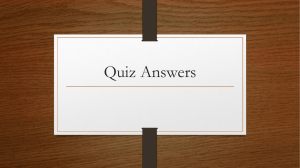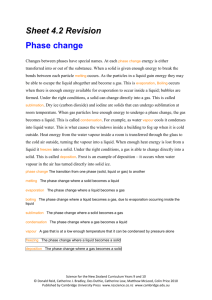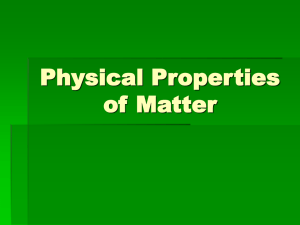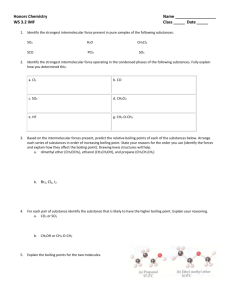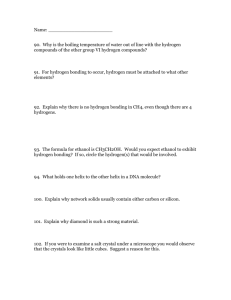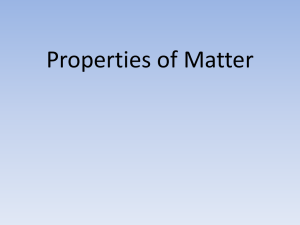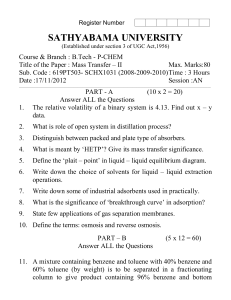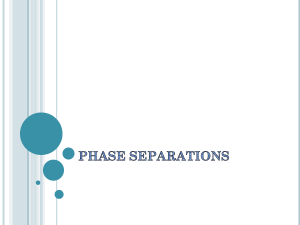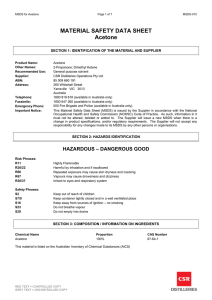Unit 3 PPT#1 – Basic definitions Answers
advertisement
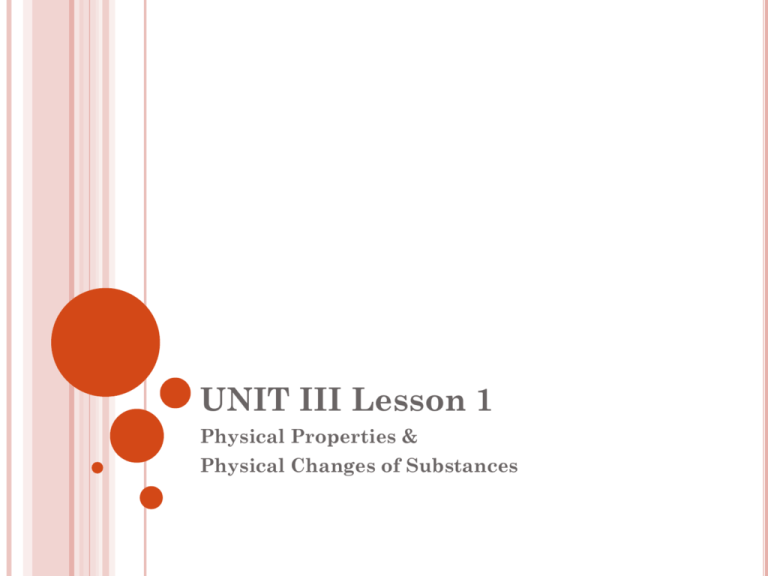
UNIT III Lesson 1 Physical Properties & Physical Changes of Substances HEBDEN TEXTBOOK Read page 41 and 42 carefully. Focus on all the definitions listed in it and the additional comments sections. Write out notes for yourself to remind you of important info that you read ( like a mini summary) You have 15 mins. Go, go, go…allez allez allez! III.1 BASIC DEFINITIONS Describing substances Qualitative information is ___________________ information Quantitative information is __________________ information BASIC DEFINITIONS An observation: An interpretation (inference): A description: Data (quantitative) usually from experiments. An experiment: *page41 III.1 BASIC DEFINITIONS What is the difference between a HYPOTHESIS and a THEORY? HYPOTHESIS vs THEORY/Model III.1 BASIC DEFINITIONS LAW: Broad ____________ or summary statement that describe a ______________________________ to explain how nature behaves when a particular situation occurs. They do not __________________________________________ They are not _________________________________________ WHAT IS CHEMISTRY ANYWAY ?! Chemistry is ... The study of the properties, composition and behaviour of matter… MATTER is anything that has _____________ and occupies a ______________ PROPERTIES, COMPOSITION AND MATTER Property is a characteristic, a trait or quality that something has Ex: water boils at 100 °C Composition is what something is made up of…its basic nature from the inside (its ingredients) EX: water is made up of two hydrogen atoms and 1 oxygen atom H20. III.2 THE PHYSICAL PROPERTIES OF MATTER Substance is something unique with a set of unique properties. Properties of matter PHYSICAL vs CHEMICAL PROPERTY PROPERTY/Rxns Itis a property that is found without creating a new substance. Ex: colour, density, hardness, melting point, boiling point, pH, viscosity, etc… a new substance is created It is when due to undergoing chemical reactions. Ex: hydrogen can burn in air (Oxygen) and produce water Hydrogen reacts with chlorine to produce hydrogen chloride. III.2 THE PHYSICAL PROPERTIES OF MATTER Physical properties can be Extensive or Intensive: EXTENSIVE Depends on the amount of substance present (extent). • Ex: Mass, volume, shape, height… • they depend on the amount you have. vs. INTENSIVE Depends only on the nature of the substance, not on how much you have of it. • Ex: density, m.p. color • Used to identify substances since they do not change. III.2 THE PHYSICAL PROPERTIES OF MATTER STATES OF MATTER Matter can exist in three common states or phases:_______, _______, and _______. http://www.chem.purdue.edu/gchelp/liquids/character.html III.2 THE PHYSICAL PROPERTIES OF MATTER Phase SOLID LIQUID GAS Shape Volume Change when heated Space between particles ARE THERE OTHER STATES OF MATTER THAT EXIST ?! FOR YOUR INFORMATION ONLY III.2 THE PHYSICAL PROPERTIES OF MATTER More physical properties to know (page 46) Hardness: resistance of abrasion or scratching. III.2 THE PHYSICAL PROPERTIES OF MATTER More physical properties/definitions to know (page 46). Diffusion: intermingling of fluids (liquids and gases) VAPOR VS GAS Gases are in a gaseous state at room temperature. The molecules in a gas can expand to occupy any available volume. On the other hand, the molecules of a vapor gain energy and vaporize from a substance which is either a solid or liquid at room temperature Vapour: it is a gas caused by the evaporation of a substance which naturally boils above room temperature (20-23.5 C ) Vapour Pressure: pressure caused by the vapour evaporating from a liquid. Ex: Acetone or nail polish remover boils at 56 C. So any acetone that evaporates at room temperature is called a “vapour” and not a “gas”. AND SOME MORE… Boiling temperature/boiling point: Temperature at which a liquid turns into ________ . Freezing point: Temperature at which a ______ turns into a ____________ Melting point is the temperature at which a ____________ turns into a _______________ MALLEABILITY The ability to be rolled or hammered into thin sheets DUCTILITY The ability to be stretched or drawn into wires VISCOSITY Resistance to FLOW ! Doesn’t wanna move! More viscous = more lazy LUSTRE How light is reflected off of a surface (oily, silky, glossy, shiny, etc ) PRACTICE QUESTIONS QUESTIONS: p. 43 #1-3, 7, 9, 11 QUESTIONS: p. 44 #13 and #15 QUESTIONS: p. 48 #21, 22, 24, 25, 26, 31. *These are the types of questions to expect on a test for Unit III ( sections 1 and 2)
